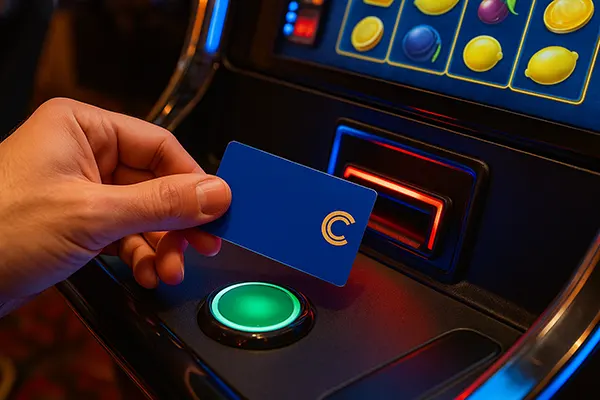
Synergistic Strategies: Combining Two or Three Betting Methods in Roulette
Roulette remains one of the most strategically flexible casino games, allowing players to merge probability theories and risk management principles in a single session. By combining two or three betting systems, experienced players can create hybrid approaches that balance risk and potential profit. In 2025, such methods have gained new relevance thanks to the widespread use of data tracking tools and analytical betting models that reveal the real efficiency of each combination.
Understanding the Idea of Synergistic Strategies
The term “synergistic strategy” refers to a combined betting approach where two or more systems complement one another. The goal is to use the strengths of one method to offset the weaknesses of another. For example, when pairing the Martingale system with the D’Alembert method, the player reduces extreme risk exposure while maintaining progressive stake growth potential.
Roulette allows this adaptability because its structure accommodates different betting types—inside, outside, and even-money bets. Each type offers its own volatility level, and blending methods lets players find equilibrium between frequency of wins and payout potential. Such balance helps avoid emotional decisions and overbetting, common pitfalls among inexperienced gamblers.
Modern synergy models also rely on statistical tools. Players often track hundreds of spins using spreadsheets or dedicated roulette trackers to evaluate the effectiveness of combinations over long periods. The analysis helps refine risk limits and identify optimal stake sizes for sustainable play.
Popular Combinations of Betting Methods
In 2025, the most researched hybrid strategies include the Martingale–Paroli mix and the Fibonacci–Labouchère combination. The Martingale–Paroli model alternates between aggressive recovery and conservative profit preservation. After a win streak, players may switch from Martingale to Paroli to secure gains while maintaining steady control over bet progression.
The Fibonacci–Labouchère combination, on the other hand, integrates structured numerical sequences with cancellation logic. This setup ensures that even during a losing streak, the betting size remains mathematically consistent, preventing rapid capital depletion. The system appeals to disciplined players who prefer a systematic, mathematics-driven approach.
Another emerging method in 2025 involves mixing fixed stake systems with fractional progression models. By staking fixed sums during low volatility phases and applying mild progression during favourable sequences, players reduce exposure and extend playtime, ultimately improving their statistical survival rate.
Analysing the Efficiency of Combined Systems
Each betting system—when used alone—operates under strict probability conditions, meaning it cannot alter the fundamental house edge. However, combining them introduces a behavioural and financial benefit: diversified risk. In other words, synergy strategies aim not to beat the wheel, but to manage capital distribution more effectively.
Statistical evaluations carried out in 2024–2025 by independent gambling research institutions, including the European Gaming Analysis Centre, have confirmed that hybrid methods tend to reduce variance during extended gaming sessions. The results show that combining two or three moderate systems often stabilises bankroll curves, preventing rapid financial swings.
Nonetheless, these strategies do not guarantee profit. Their strength lies in discipline and consistency. Players must define strict loss limits and progression cut-offs before starting any roulette session. Successful synergy depends not on luck but on the mathematical balance between aggression and conservation.
Practical Implementation and Real-World Results
Practical use of synergy in roulette typically begins with simulation. Many professional players utilise free-spin trackers and mathematical simulators to analyse how two systems behave when intertwined. For example, alternating between D’Alembert and Fibonacci sequences can demonstrate how each compensates for the other’s weaknesses over 500–1000 simulated spins.
Real-world reports from online gambling communities in 2025 indicate that consistent users of hybrid systems report higher session longevity rather than greater profit margins. This longevity provides more gameplay data, which can later be analysed to further improve performance metrics. Essentially, synergy encourages a data-driven mindset, turning roulette from pure chance into a managed probability exercise.
Moreover, hybrid betting systems fit well with responsible gambling principles. Because players must monitor results carefully, they are less likely to engage in impulsive or erratic betting behaviour. This makes synergy not only a tactical tool but also a psychological aid for self-control and budgeting.

Long-Term Sustainability and Responsible Play
Even though no betting strategy can override the built-in house edge, combining systems supports a more sustainable style of play. It teaches players to respect limits, recognise probability boundaries, and plan each step rather than rely on instinct. This approach aligns with the modern gambling trend in Europe—where analytical decision-making replaces superstition and emotional play.
In long-term roulette play, the key advantage of synergy lies in the adaptability of bankroll management. Adjusting bet size or method based on recent outcomes enables flexible control, which is critical for those playing extended sessions. Hybrid systems also allow the integration of stop-loss and take-profit mechanisms—concepts borrowed from financial trading.
Ultimately, the success of any synergistic betting model depends on the player’s consistency. The goal is not to chase profit in one night but to manage risk intelligently across hundreds of spins. In that sense, synergy embodies both mathematical discipline and psychological stability, which remain the foundation of modern roulette strategy.
The Future of Roulette Strategy in 2025 and Beyond
Looking ahead, the concept of synergy will likely evolve alongside technology. Artificial intelligence tools and predictive analytics are already assisting players in identifying statistically optimal combinations. Data visualisation software allows users to detect patterns invisible to the naked eye, enabling continuous refinement of hybrid betting logic.
Experts predict that future synergy models will include adaptive algorithms capable of automatically switching between betting systems in response to changing results. This automation won’t eliminate randomness but will help maintain emotional detachment, reducing errors caused by fatigue or frustration.
In summary, synergistic betting represents the next logical step in roulette strategy. It merges mathematics, psychology, and digital analysis into a single structured framework, empowering players to approach the game with balance, patience, and measurable control.
